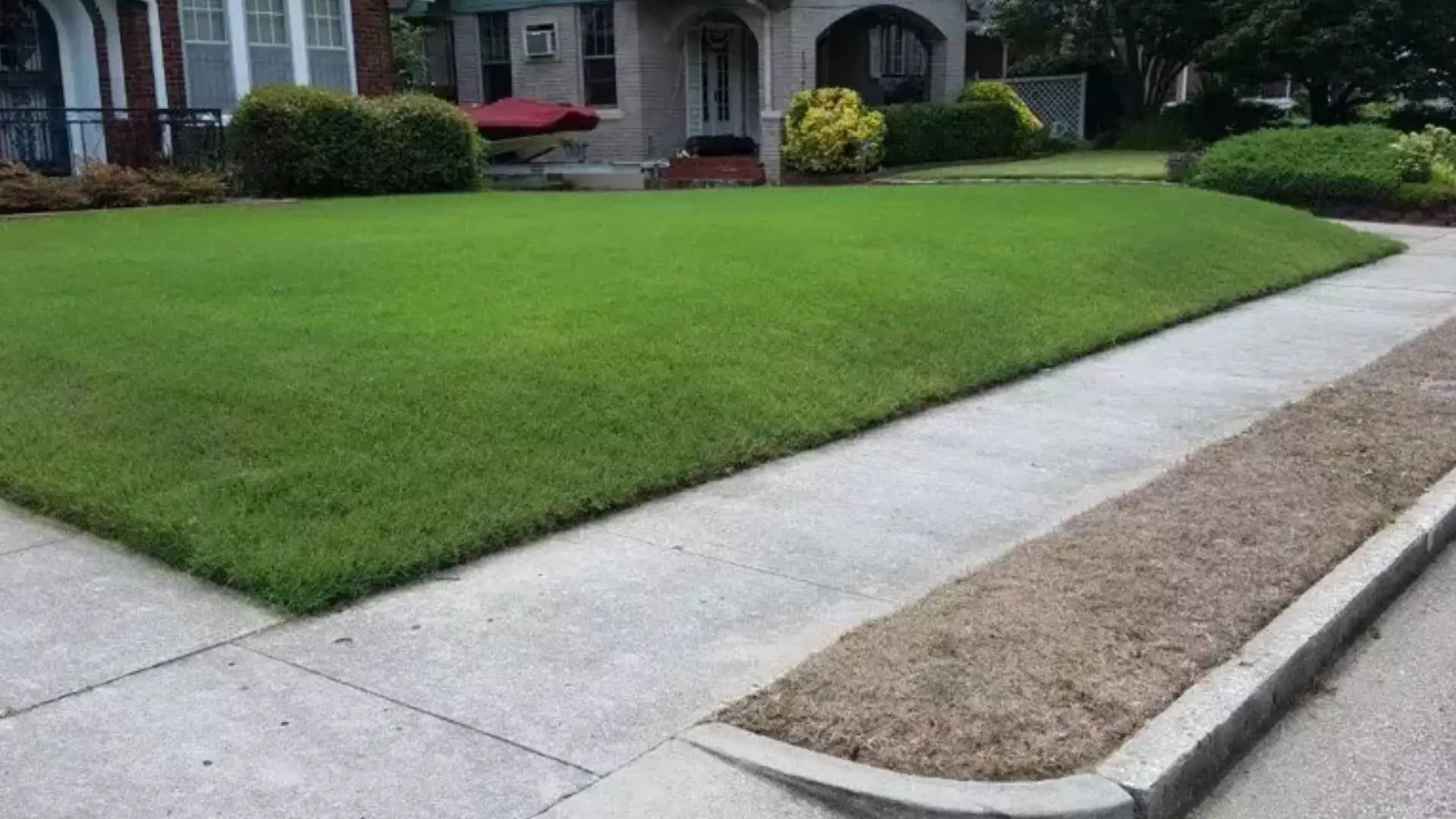I have seen lawns that have brown patches on lawns and lawns that are not greening up for over the 34+ years my company, Herbi-Systems, has been in operation. My industry colleagues have witnessed the same baffling occurrence.
Some brown patches on lawns have the appearance of being dead in areas as small as 10×10 feet, as well as in areas as large as an acre. Other brown patches on lawns appear dead on one side of a drive or sidewalk and untouched on the opposite side. In addition, there are lawns that appear dead in the backyard and not the front yard or vise versa, while some have a mottled appearance. There appears to be no discernible pattern of infestation. The possible exception is that dead areas often appear along property/mowing lines.
Problem:
Our management team is unsure as to the entire cause of the problem, but our knowledge and experience lead us to the following opinion (which is subject to change as we receive more information):
All brown patches on lawns show damage from the hunting billbug (Sphenophorus spp). Grass damaged by hunting billbugs will easily pull loose from the ground. This damage is detected by doing the “tug test,” then turning the grass over and looking at the roots. Later in the season, the blades will decompose so the turf can be wiped away, exposing just the soil. Billbug damage is confirmed by noting hollowed stolons, rhizomes, and roots. No other insect hollows these plant parts in turf. With a strong magnifying lens, chewed roots and other plant parts can be confirmed.
There also may be a disease component to “Brown Yard” that we have not yet confirmed.
The damage occurs here in Memphis sometime in September, October, and/or November. It is difficult or impossible to detect in the fall as the turf naturally turns brown as it enters dormancy. We have been able to detect it early in a very small percentage of lawns.
Billbug damage, if in very small spots, may resemble Spring Dead Spot, in which the grass actually dies rather than merely turning dormant. The damaged turf is not apparent until springtime when these areas fail to green up. Spring Dead Spot usually appears in small spots from 6-inches to 3-feet in diameter.
Oddly, the hunting billbug can be found primarily in well-fertilized and well-maintained lawns. This pest also sometimes follows mowing lines, yet unpredictably, invades one side and leaves the other side untouched.
Contact us for lawn care services.
Turf Affected:
In the Memphis area, billbug damage is mostly limited to Bermudagrass and zoysiagrass. However, we are aware of a report involving ryegrass that was severely damaged in an overseeded athletic field. And strangely, in some yards, the Bermudagrass will be damaged and not the zoysiagrass. And conversely. Then, too, some varieties of Bermudagrass will be damaged and other varieties of the same species will be fine.
Course of action:
Since the hunting billbug is an insect, an insecticide is appropriate. At this time, we are recommending a systemic and a contact insecticide if adults are present. A systemic alone is appropriate for prevention.
The damaged lawn should be scalped and dethatched in order to allow the sun to warm the soil. Afterward, a slow green up should occur, but it may be late summer before a lawn returns to its healthy appearance. Also, the yard may not recover in areas of partial shade.
Billbugs rarely infest the same lawns in a consecutive year, but will sometimes return after a couple years. The creatures rarely attack new sod.
It has been our experience that about 95% of the billbug affected lawns make a full recovery by mid-summer with 4% more by late summer, while 1% do not fully recover. Smaller, confined areas will often present with severe damage. Larger, open areas will reveal more severe damage near pavement, stones, or gravel, tapering away to open ground.
We are currently working with university and agricultural extension professionals to find a better solution.
- Kenny Crenshaw , President
More Info on Billbugs and Treatments:
- https://www.gcsaa.org/gcm/2017/july/billbug-species-composition-and-life-cycles
- https://www.ncbi.nlm.nih.gov/pmc/articles/PMC4822124/
- https://www.turffiles.ncsu.edu/insects/hunting-billbug-in-turf/
- https://academic.oup.com/jee/article/105/6/2045/795153
- http://turf.okstate.edu/pest-management/insects-1/billbugs/
- https://extension.tennessee.edu/publications/Documents/PB1342.pdf



Comments (0)
Thanks for your comment!
Thanks for your feedback! Your comments have been successfully submitted! Please note, all comments require admin approval prior to display.
Error submitting comment!
There is a problem with your comment, please see below and try again.